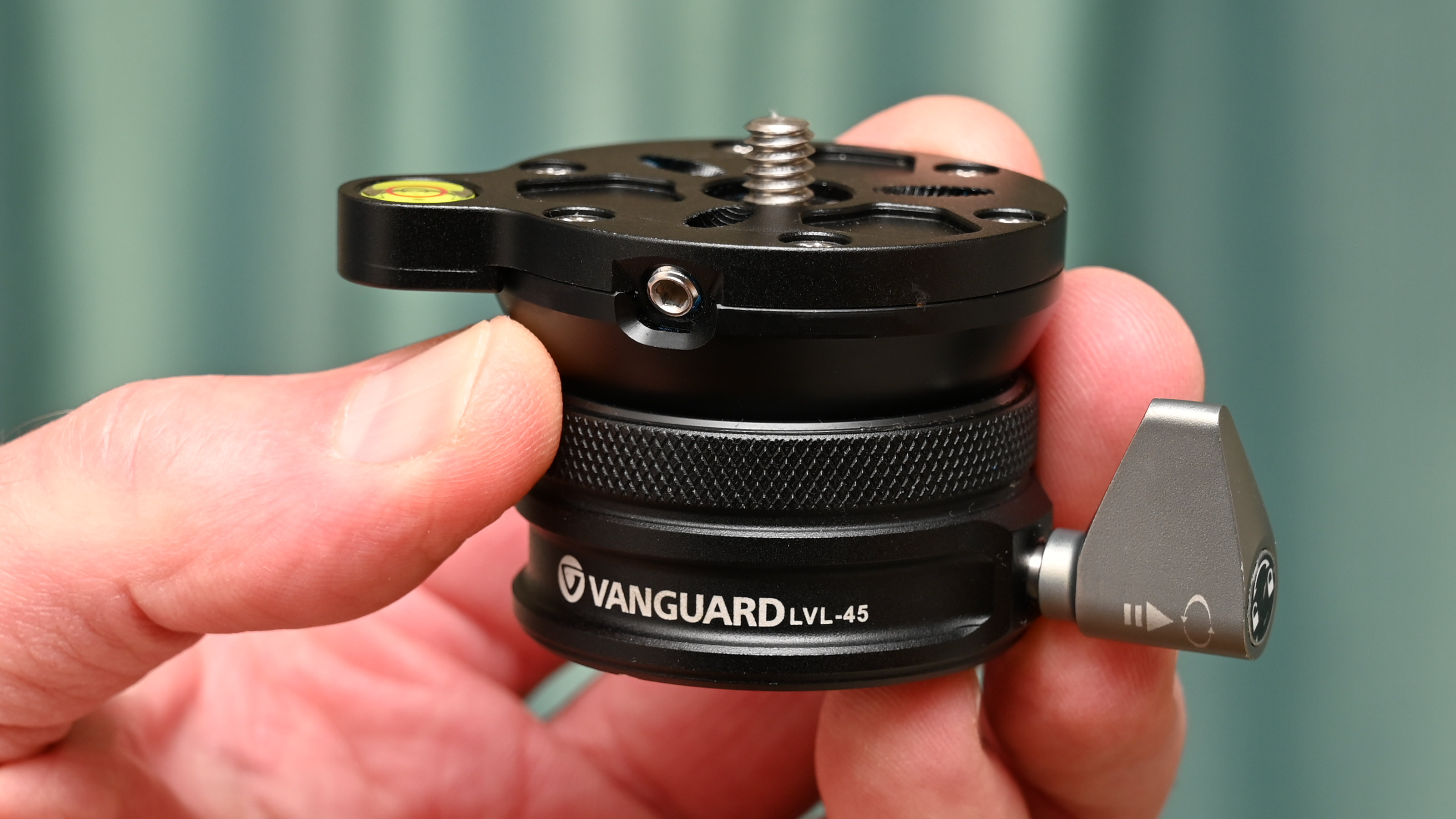
Vanguard doesn’t need much by way of introduction. The company has been making tripods and other accessories for photographers for about 40 years, growing in knowledge and expertise along the way, and seeking to supply solutions to changing trends and requirements.
Trends of late include hybrid shooting of both stills and video, along with content creation. These bring a particular problem in that, when panning a camera, you need your tripod to be absolutely level. If the legs are on the slant and you compensate by angling the head to level things up, everything goes wonky when you start panning.
Kits that get around the problem include the Vanguard Alta Pro 3VRL 303CV, with its removable levelling system, and the Vanguard VEO 3+ 303CBS which has a dual-axis ball head, the uppermost panning mechanism keeping the camera level when panning. The advantage of the Vanguard LVL, based on a levelling system featured in the Vanguard Alta Pro 3VL 304CT legs, is that you can use it with any set of tripod legs and head that you already have, adding the appropriately sized version between the legs and head to keep everything on the level.
As such, it aims to suit almost any of the best tripods for photographers, the best travel tripods and the best tripods for videographers.
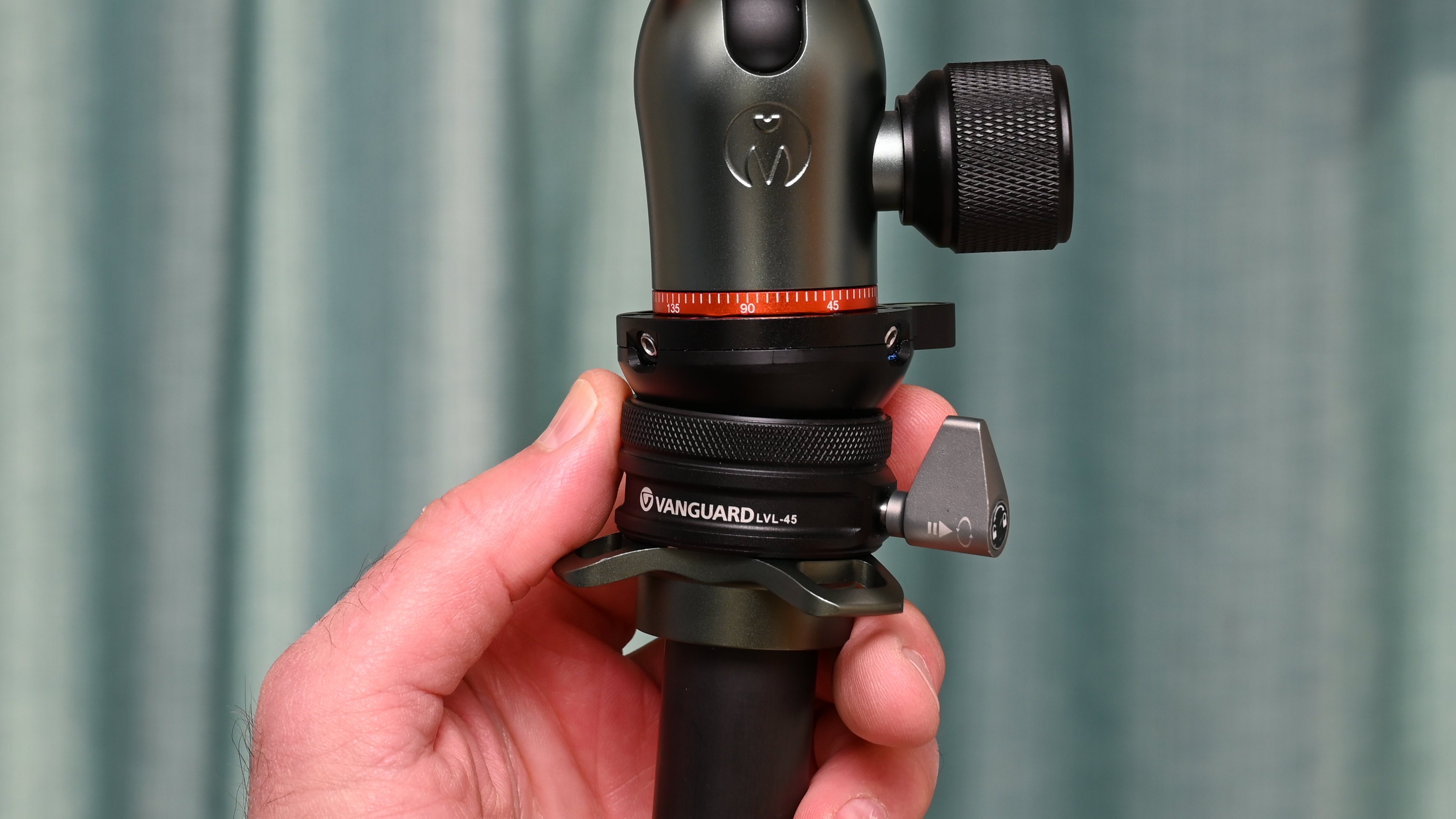
Vanguard LVL: Specifications
Vanguard LVL: Price
I grabbed one of the first Vanguard LVLs to come to the market, its launch in the UK being spurred on to coincide with The Photo & Video Show of March 2025. Availability in the USA and Australia is likely to be in July/August 2025. I got hold of the LVL-45 version, which is a perfect fit for one of my tripod kits. As per the naming convention, the lower mounting plate has a 45mm diameter, but there are five different sizes available, ranging from a diameter of 42mm up to 75mm, with a corresponding spread in purchase price of £55 up to £100. Pricing is yet to be finalized for other world regions but the RRP for the size range is currently set at $65 to $120 for the USA, and AU$115 to AU$220 for Australia. That makes them pretty good value, size for size, across the range.
Vanguard LVL: Design & Handling
The Vanguard LVL Universal Tripod Levelling System aims to provide an elegant and straightforward solution to a perennial problem. Even so, if you just shoot stills, you probably won’t need it. That’s because if your tripod legs aren’t perfectly levelled, you can adjust any 3-way head, ball head or geared head accordingly, to perfectly level the camera. Level things up, shoot, job done. Things get trickier as soon as you start panning. If you’ve angled the head to compensate for unleveled legs, as soon as you start panning, your horizon starts to tilt. That can be disastrous when you’re shooting video, as well as for stills if you’re panning to take a sequence of shots that you want to stitch into a panoramic image.
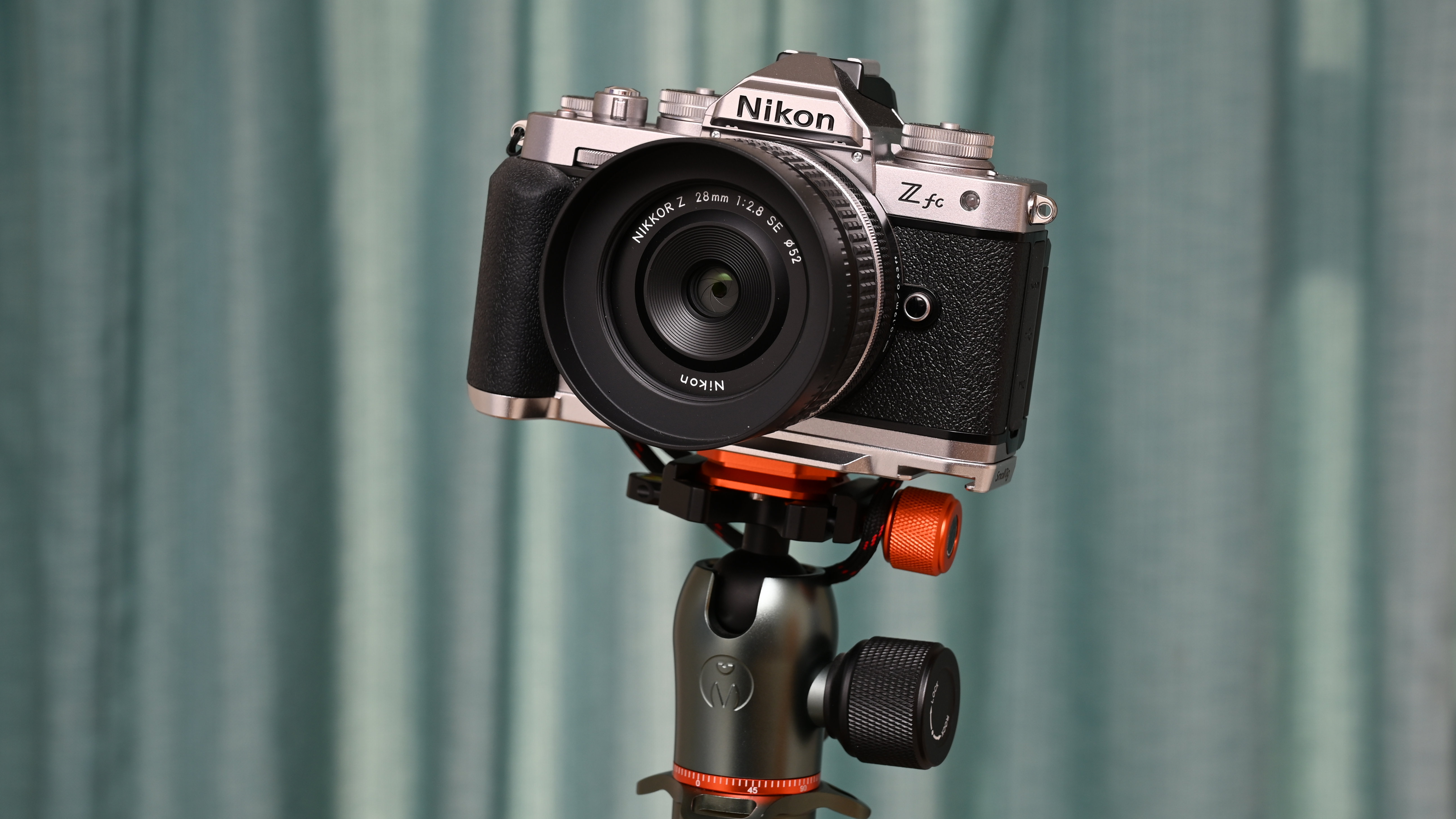
The Vanguard LVL is designed to sit between the mounting platform at the top of a set of tripod legs and the tripod head above. You therefore need to detach the head from the legs, screw the LVL onto the legs, then attach the head to the top of the LVL. That probably sounds simple enough but one hurdle in making the system ‘universal’ is that different sets of tripod legs with different sizes and payload ratings have different diameters of mounting plates.
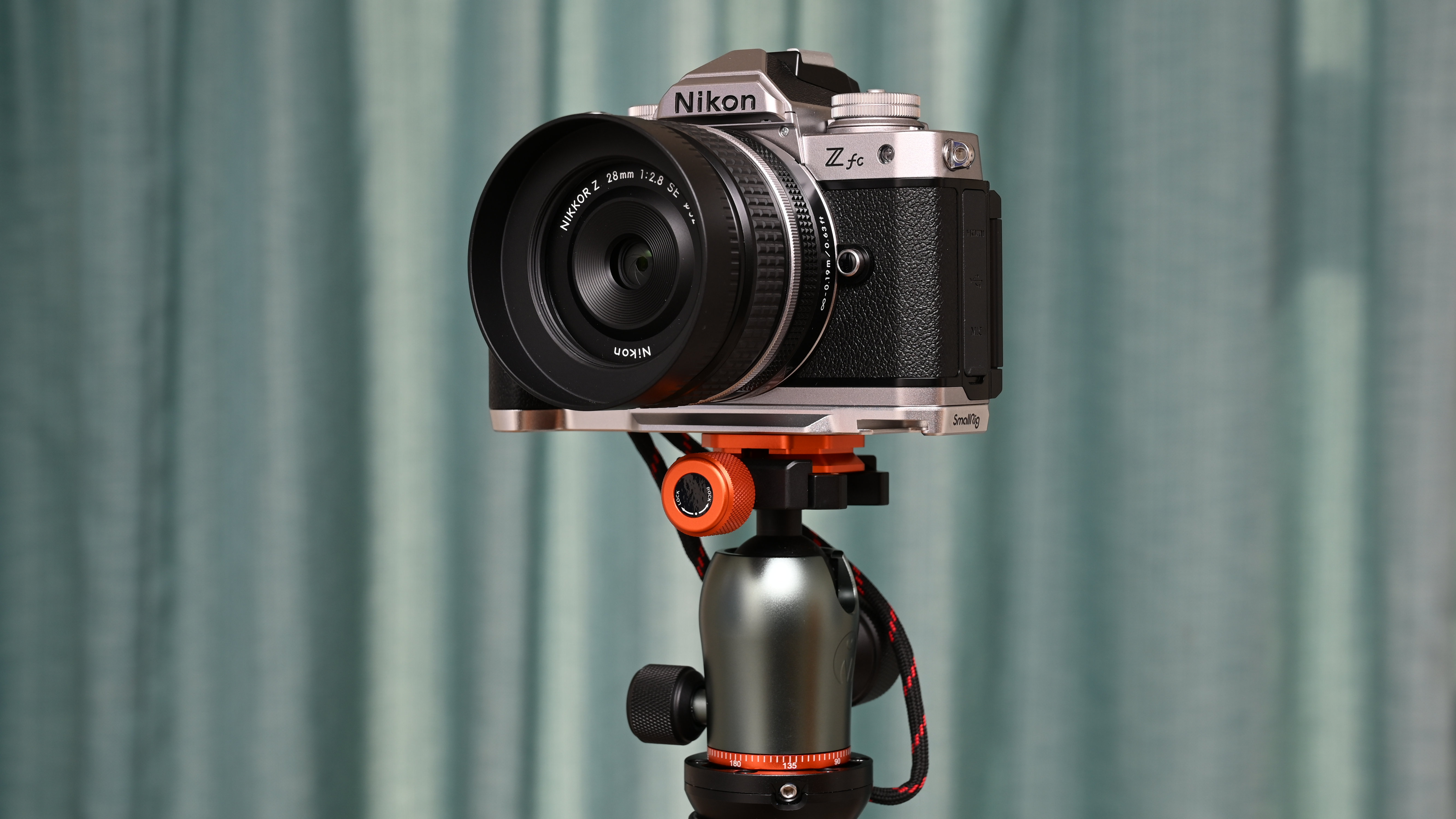
To make the system as universal as possible, the LVL comes in a range of sizes with lower mounting plate diameters of 42mm, 45mm, 55mm, 65mm and 75mm. Working through the range, the diameter of the top plate also increases through 45mm, 50mm, 60mm, 70mm and 80mm respectively. The height grows from 36mm for the smallest edition to 43mm for the largest, and the load capacity increases through 20kg, 25kg, 30kg, 35kg and 40kg.
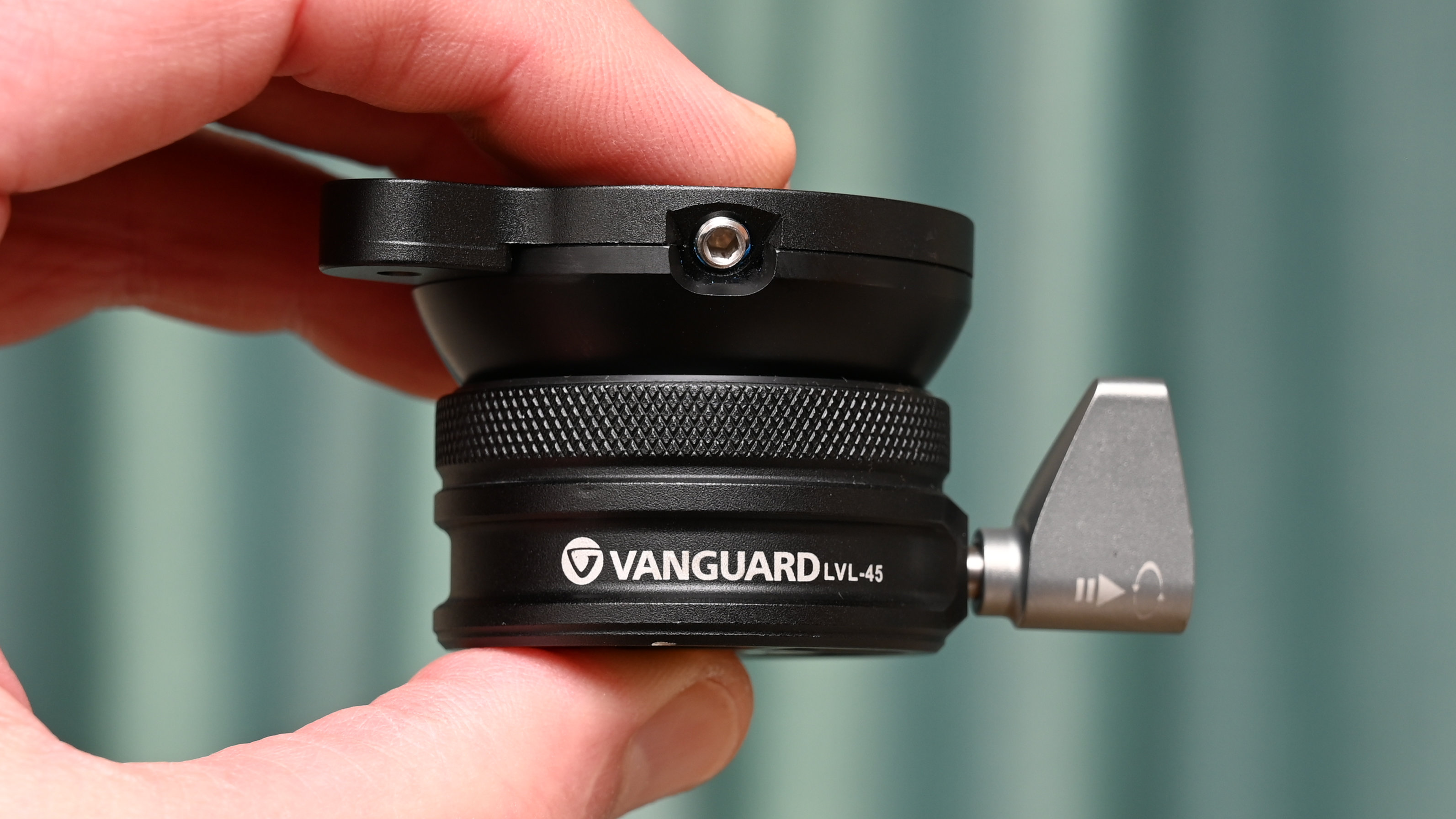
Suffice it to say that there’s a Vanguard LVL to suit a wide range of individual requirements in terms of size and load rating. One thing they all have in common is a full 360 degrees of rotation. All but the smallest LVL-42 enables a maximum of 15 degrees of tilt in any direction, whereas this drops to 13 degrees for the 42mm edition.
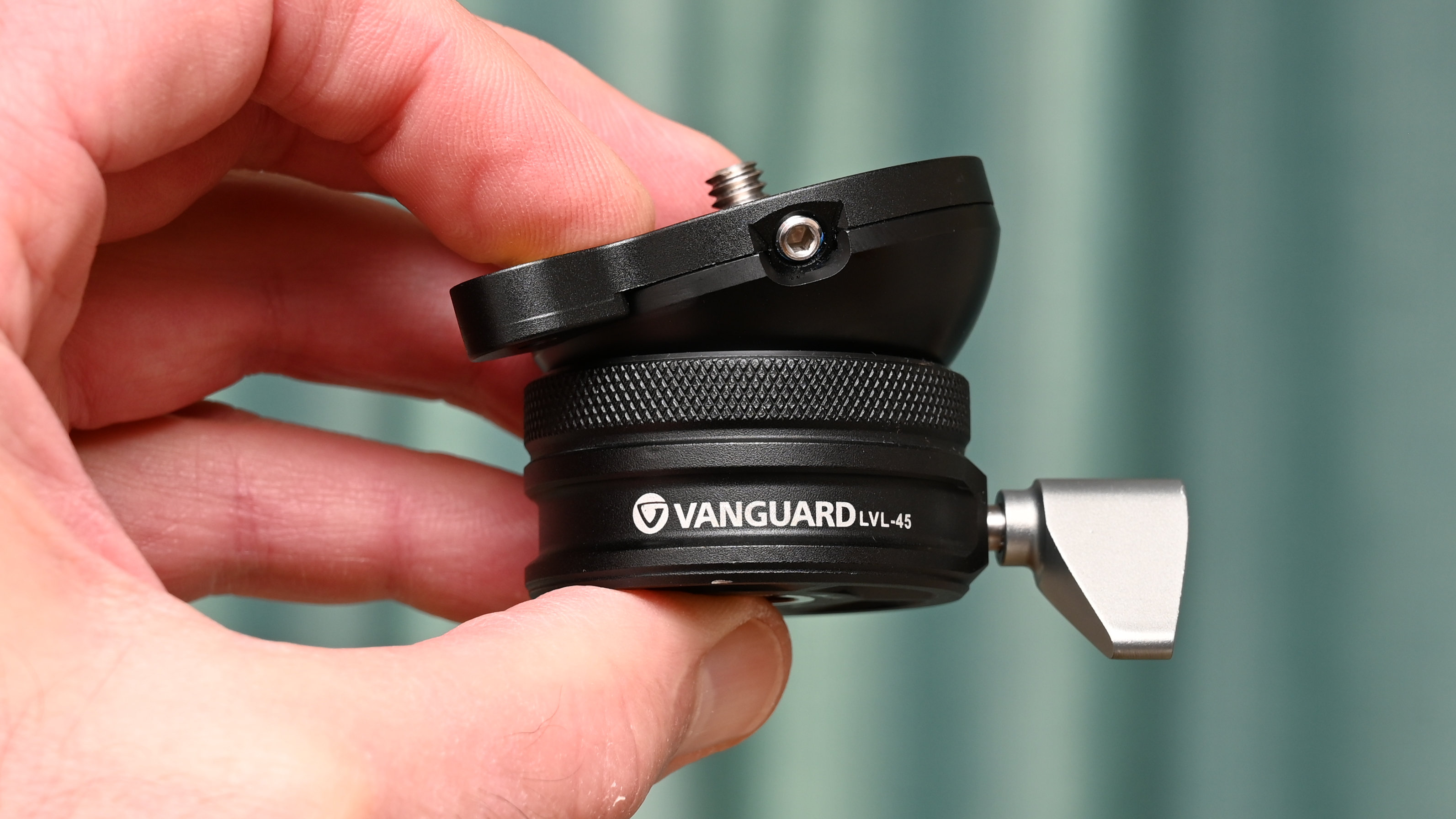
One application where the diameter of the LVL can be critical is with the use of travel tripods. The vast majority of these are now designed so that you swing the legs up around the extended center column for compact storage. The smallest LVL-42 and LVL-45 editions in the series are designed with travel tripods in mind, and the difference between them of just 3mm in diameter means that you should be able to get a good fit. These two editions are also relatively lightweight at just 115g and 140g respectively, while maintaining impressive load capacities of 20kg and 25kg.
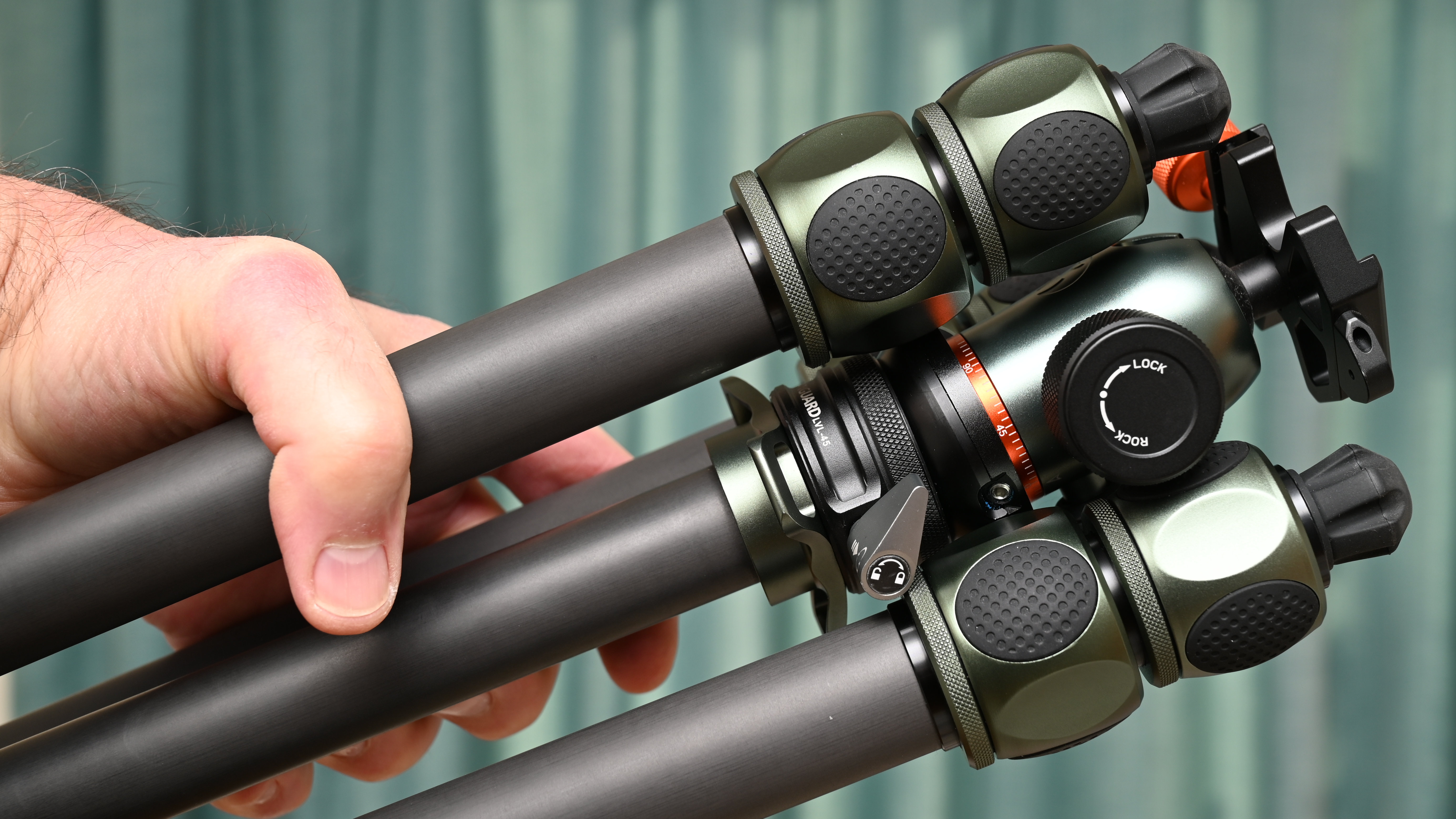
To suit the largest variety of tripod legs, the base of the LVL features a 3/8” mounting thread and comes complete with a ¼” thread adapter. If your legs have a 3/8” mounting screw but you want to use a head with a ¼” socket, you could also use the supplied thread adapter up top for the head. However, if you need to use it at the base, you might have to buy one separately for the head if you don’t have one, as only one thread adapter is supplied with the LVL.
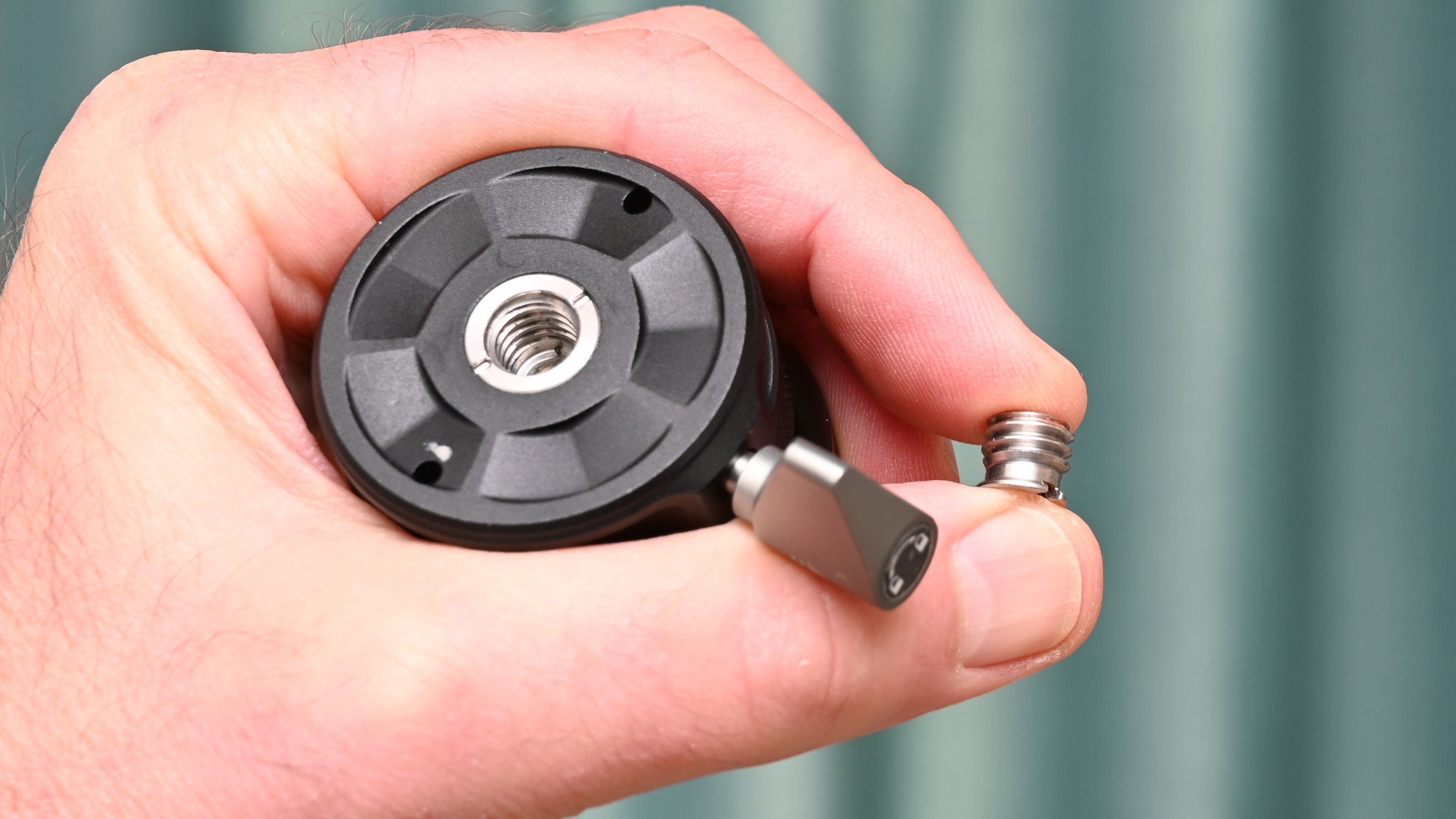
Vanguard LVL: Performance
For this review, I tested the Vanguard LVL-45 with my trusty 3 Legged Thing Winston 2.0 Carbon Fiber Tripod and AirHed Pro ball head. It’s a full-sized tripod with a strong load rating, but folds up like a travel tripod for relatively compact stowage. Any additional joint or component in a tripod system represents a potential point of weakness, making the tripod more prone to unwanted flexing or vibrations. I found there was no compromise in performance when using the Vanguard LVL. They’re precision-engineered from solid blocks of aluminum, using CNC machining to very tight tolerances. The high-quality feel certainly translates into high-end performance.
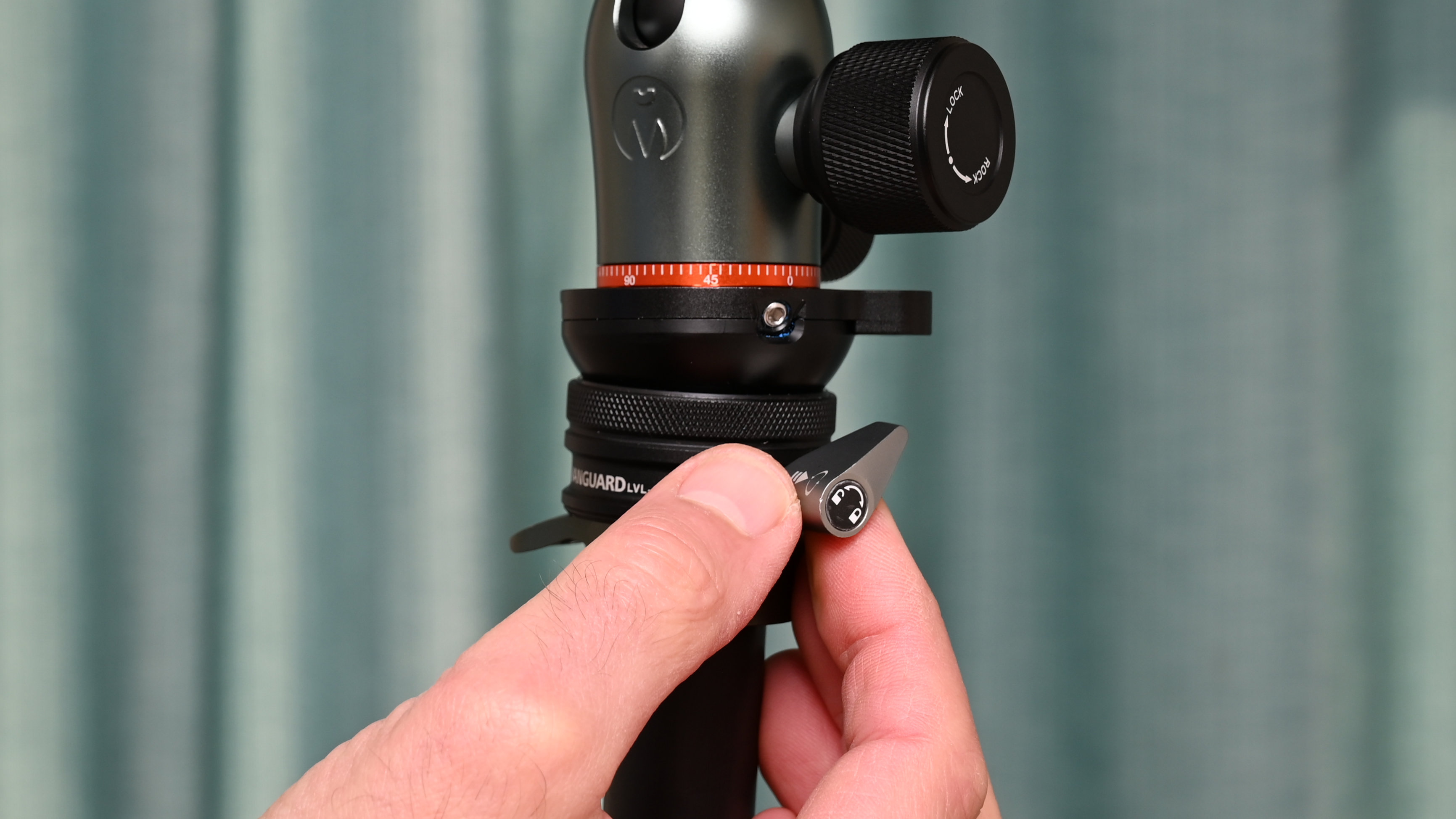
The +/-15 degrees of tilt in any direction in all but the smallest LVL-42 edition (+/-13 degrees) offers a very generous range of adjustment. Adjustment itself is quick and easy although, as with ball heads, larger diameters of the operational component can make really fine adjustments a little easier and less fiddly. Even so, I found the second-smallest LVL-45 easy to adjust precisely.
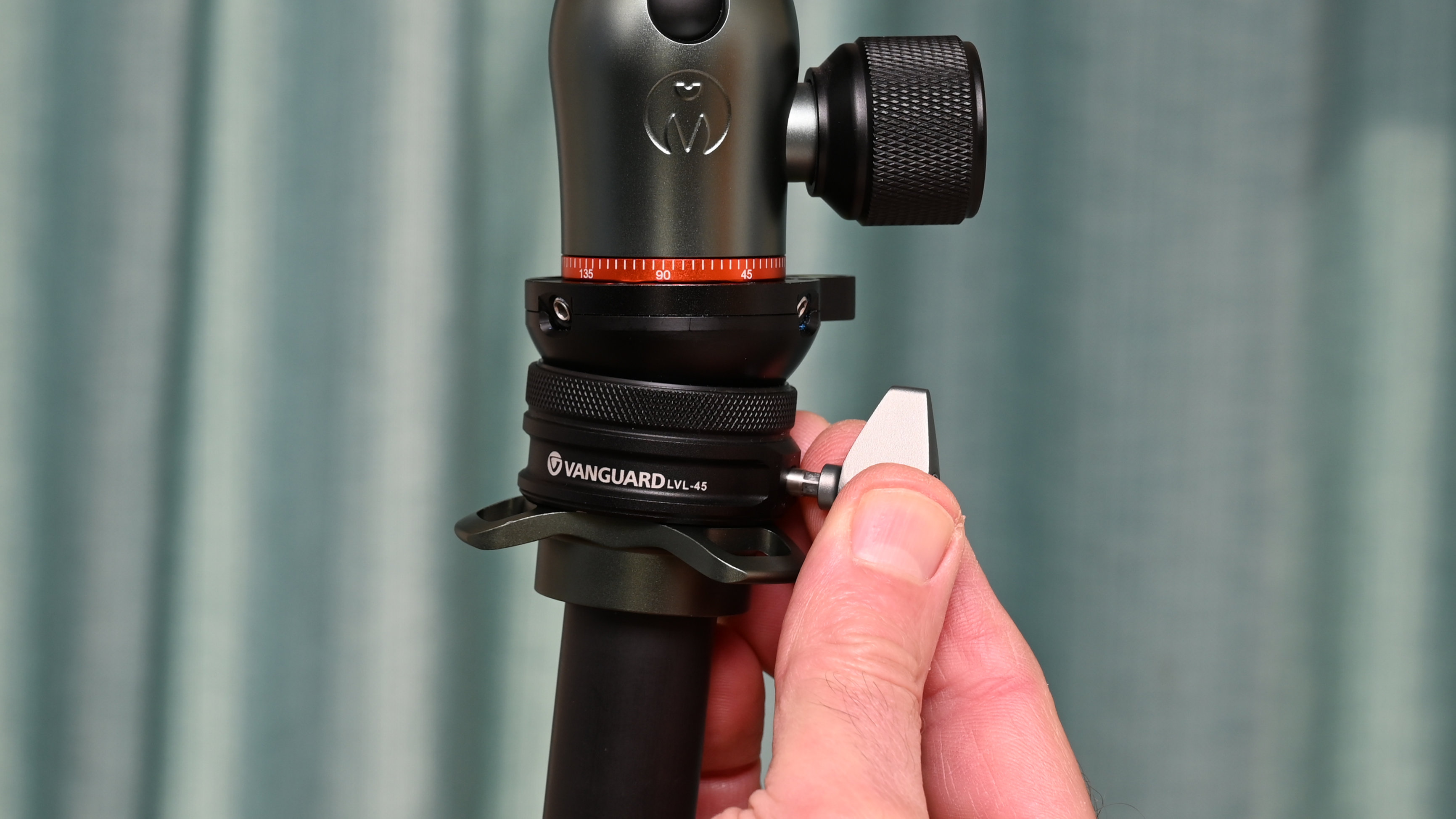
To help with accurate adjustment, there’s a bubble level built into the top plate of the leveler. It’s good as far as it goes, although I generally prefer to rely on the virtual horizon option generally featured in cameras nowadays, for really precise adjustments.
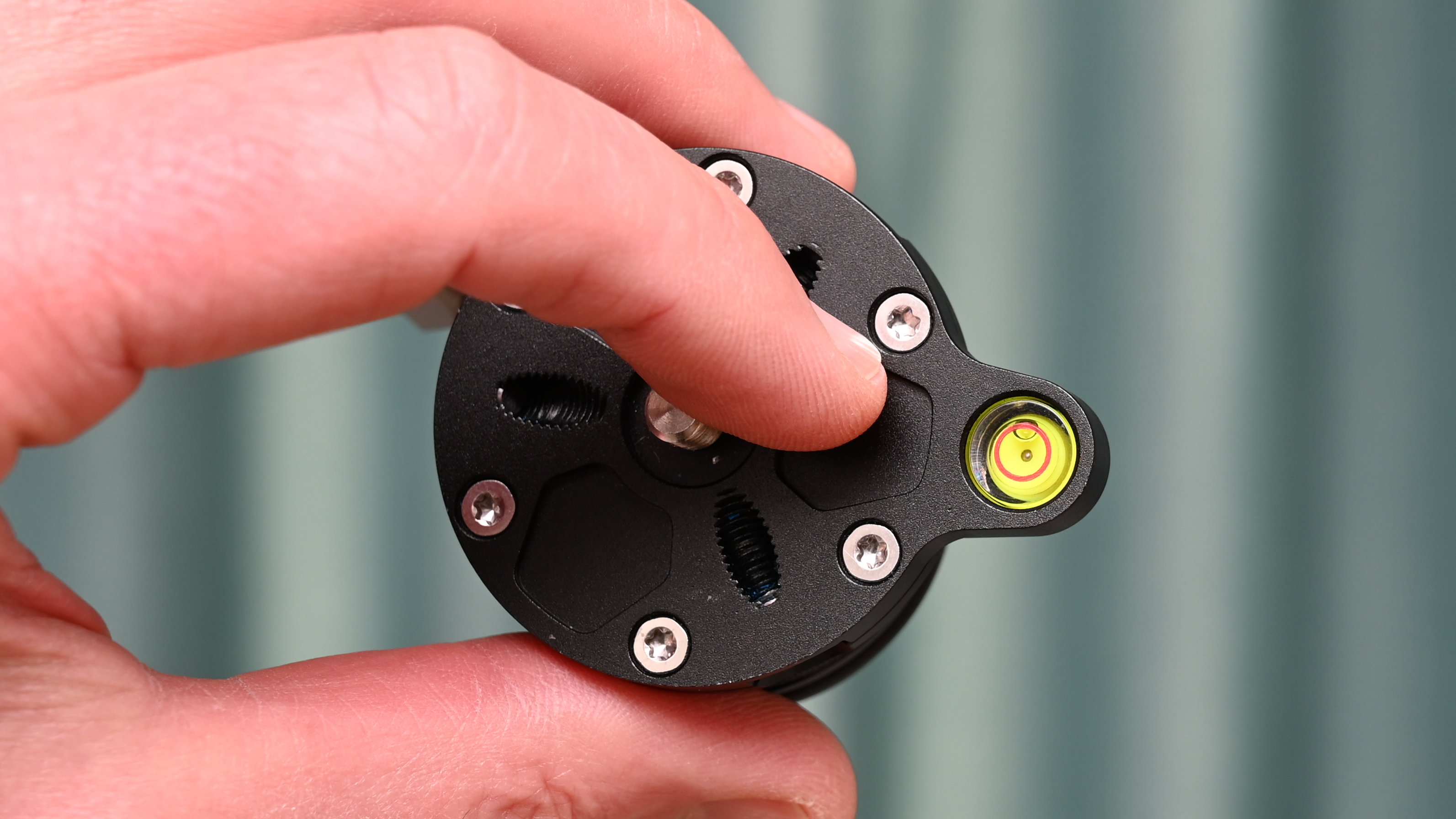
One thing that I’ve found to be a real flaw in the performance of many tripod systems is that when panning from right to left, the head can start to unscrew from the legs. This makes the camera very wobbly and can ruin potentially great shots and video footage. To keep everything locked firmly in place, the LVL features three locking screws which you can tighten with the supplied hex key. They’re placed at 120-degree intervals around the top plate to ensure a really solid bond between the LVL and the tripod head. For an equally firm fixing between the LVL and the tripod legs, you need to rely on the tripod platform itself having one or more locking screws of its own.
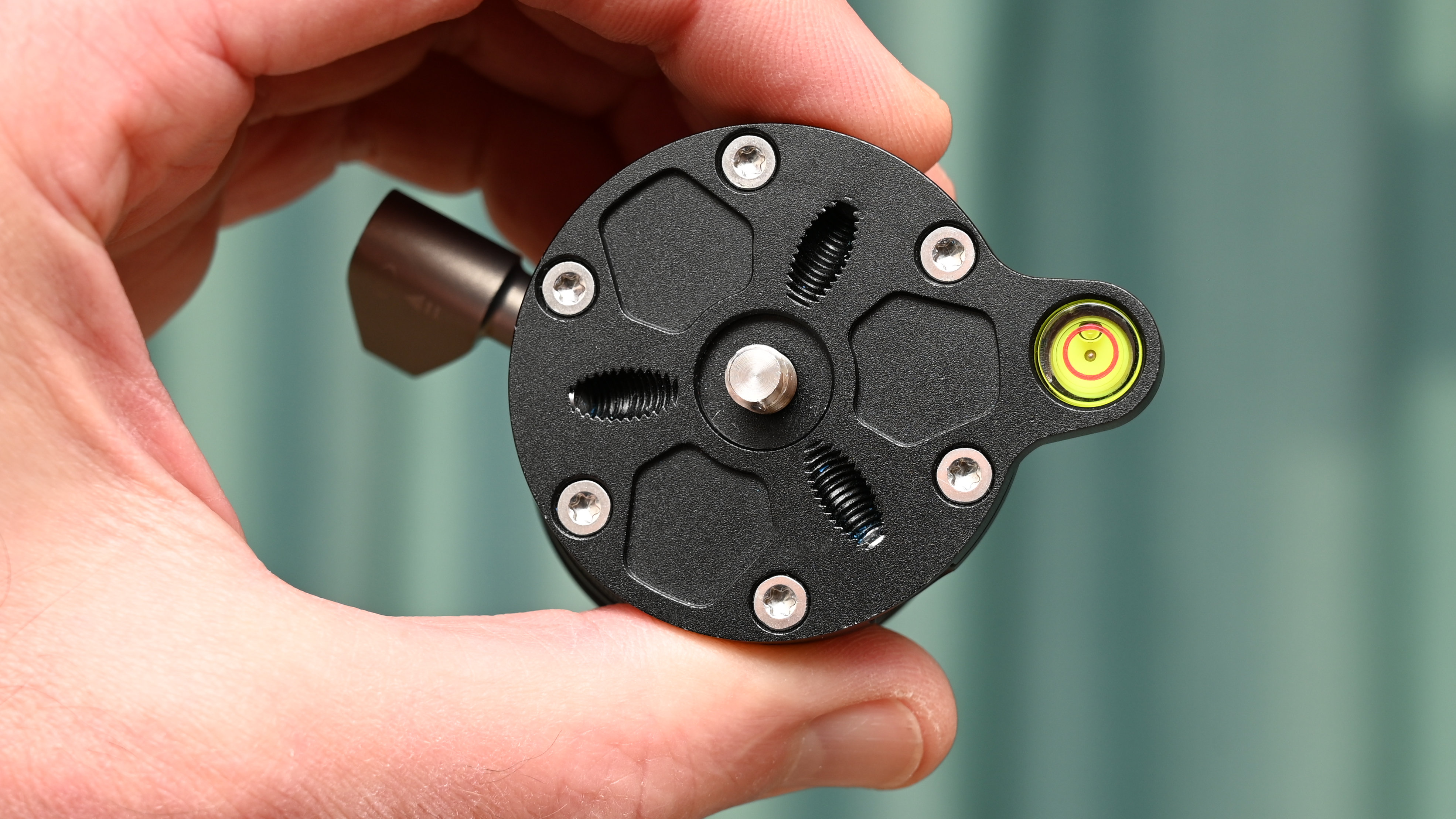
Vanguard LVL: Verdict
Like many of us, I’m finding that I use my camera’s video capture capabilities more than I used to, instead of majoring on stills for most of the time. I generally use a tripod when shooting video but often find it most convenient to take a regular photographic tripod with a ball head that has a pan-only release for catering to the types of stills and video that I often shoot. The Vanguard LVL makes my life a lot easier as I don’t have to spend a lot of time making sure that the legs of my tripod are perfectly leveled when setting it up for panning shots. I think it’s a neat product that’s really nicely made, performs excellently and is very good value at the price.








